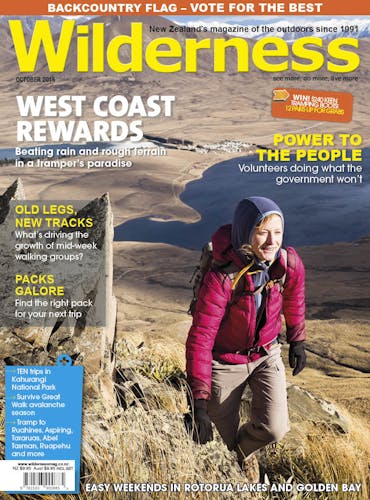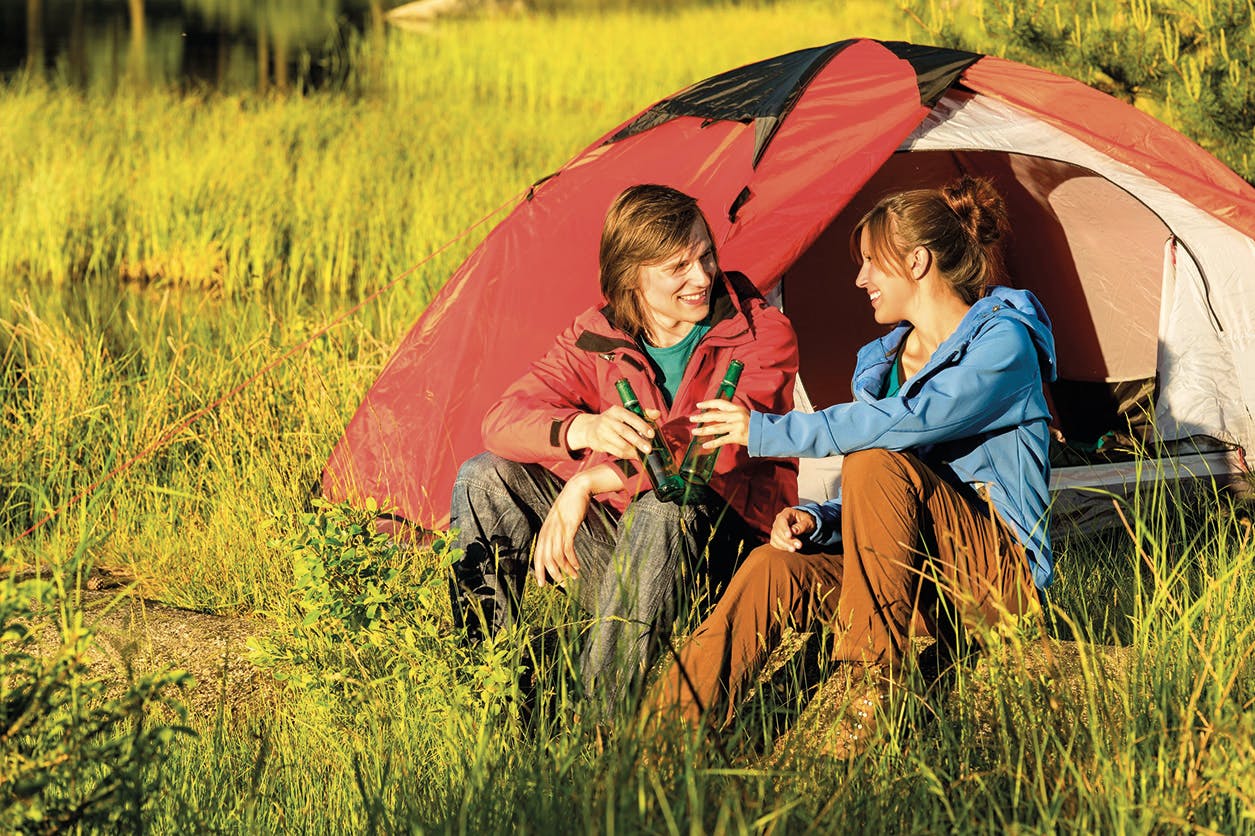Mixing alcohol and tramping can be fun, but drinking when you’re cold, wet and far from your accommodation is just plain crazy, writes Hazel Phillips
There’s a tramping legend about a bloke who got hammered on the Milford Track, lost his way and ended up spending a night out with the possums. He started slamming back the Drambuie at Sutherland Falls, about an hour before Dumpling Hut, and was sufficiently drunk to not make it to shelter that night. He was found on the track the next morning, very close to the hut, snuggled up in his sleeping bag and just a little worse for wear.
I don’t usually give much thought to alcohol, but I’ve been thinking about it lately; specifically, about mixing it with tramping.
Drinking a bottle of Drambuie is at the extreme end of the scale, but many of us enjoy a small plastic mug of wine when we’re in the wilderness, so it baffled me that my inner safety guru was disturbed by an alcohol sponsorship on social media recently.
A friend of mine – who I’ll refer to as Biff – has set up an outdoors adventure group on Facebook. On the surface it’s a great premise: get people into the great outdoors as often as possible and give good advice while doing it. Hook people up with adventure buddies, and help with those niggly beginner questions such as about which gear to take.
But Biff is pretty new to the game himself and isn’t in any position to be dishing out advice.
Soon it transpired that Biff wanted to get corporate sponsorship – companies paying him or giving him deals if he promoted them on his page. It was one thing to promote outdoor gear brands on his page. It was another thing altogether when he brought on an alcohol sponsor.
Alcohol is now a regular part of the Facebook page and also the trips Biff plans.
So what’s the problem?
Well, everyone loves a cold beverage on a hot day after a long tramp. But recently, Biff posted photos to the Facebook page of his group consuming cold alcohol after a long, cold and wet alpine hike. The group did the Tongariro Alpine Crossing in the middle of winter – 30 largely inexperienced trampers, 80km/h winds, sideways snow and freezing temperatures – and were forced to retreat before they got to Red Crater. They returned to the bus, soaking wet, freezing cold, with a reasonably long drive back to their accommodation, and were handed cold beers to consume. They’re shown in the group’s photo album sitting in the bus, soaked and chilled to the bone, quaffing beers with the brand clearly shown to the camera for promotional purposes.
It bothered me and it took a while to figure out what was wrong with that picture (aside from the utter overkill of continually ramming corporate sponsorships down people’s throats). Promoting alcohol consumption as an integral part of an outdoor activity requires some caution in its messaging. It’s one thing to get on the Jagermeister at the end of a tramp when you’re safely at the hut, dry, warm and not hypothermic. It’s another to be consuming it before you get yourself into a ‘safe’ state.
Beyond the safety aspect, the Advertising Standards Authority’s Code for Advertising and Promotion of Alcohol warns against linking alcohol to any hazardous activity. Alpine tramping has its hazards, and Biff’s Facebook page has featured the alcohol packaging (another no-no according to the Code) in a variety of situations that imply risk: alongside a caving helmet; next to an ice axe; tucked into a backpack on a hike; and at a backcountry hut with the caption ‘trying to get warm out of the weather’.
The code also says that sponsorship shouldn’t portray the consumption of alcohol.
Ultimately all this makes me question the ‘new way’ of going tramping. Rather than joining a club, learning from well-informed, experienced hands, it’s a bit of a free-for-all. It’s also symptomatic of new media and the associated information gap.
We’ve all had our bit to say about it. But for the moment, Biff isn’t listening to any arguments.







